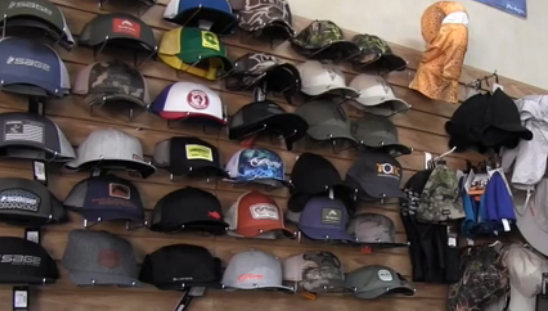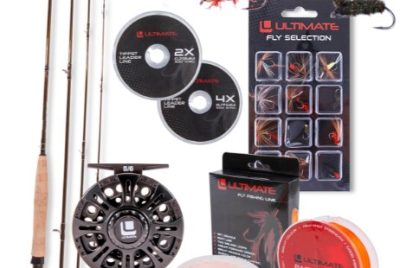Fly Fishing Hat
Introduction
As a devoted fly fishing enthusiast, I can’t emphasize enough the importance of wearing the right hat for a successful and enjoyable fishing experience. Fly fishing hats not only provide sun protection but also offer various features to enhance comfort and functionality. In this article, I’ll share helpful suggestions on choosing the perfect fly fishing hat, considering factors like sun protection, materials, fit, ventilation, and additional features.
Choosing the Perfect Fly Fishing Hat
Sun Protection and UPF Ratings
Fly fishing often involves long hours under the sun, and protecting your skin is essential. Look for hats with UPF (Ultraviolet Protection Factor) ratings, as they indicate the hat’s ability to block harmful UV rays. Hats with a UPF of 50+ provide excellent sun protection.
Wide Brim Hats
Wide brim hats offer superior sun coverage for your face, ears, and neck. They create a barrier against direct sunlight, reducing the risk of sunburn and heat exhaustion during hot days on the water.
Neck Flap Hat
Neck flap hats are designed with extended fabric at the back to protect your neck from the sun’s rays. They are particularly useful when fishing in areas with intense sun exposure.
Baseball Caps with Neck Covers
For anglers who prefer the classic baseball cap style, choosing hats with neck covers or capes adds extra protection for the neck and ears without compromising on style.
Material Matters: Best Hat Fabrics for Fly Fishing
Breathable and Moisture-Wicking Fabrics
Fly fishing can be physically demanding, and wearing a hat made from breathable and moisture-wicking fabrics ensures comfort even in hot and humid conditions.
Nylon and Polyester
Nylon and polyester hats are lightweight, quick-drying, and highly durable. They are excellent choices for fly fishing in different weather conditions.
Nylon and Spandex Blend
Hats with a blend of nylon and spandex offer a comfortable stretch fit, accommodating various head sizes without compromising shape retention.
Hat Fit and Adjustability
Finding the Right Hat Size
A well-fitted hat is crucial for comfort and stability during fishing. Measure your head circumference and refer to sizing charts provided by hat manufacturers.
Adjustable Straps and Drawstrings
Many fly fishing hats come with adjustable straps or drawstrings, allowing you to customize the fit to suit your head shape.
Chin Cords for Windy Conditions
If you frequently fish in windy areas, hats with chin cords or chin straps ensure your hat stays in place, even during gusty weather.
Ventilation Features for Comfort
Mesh Panels and Eyelets
Hats with mesh panels and eyelets promote airflow, preventing excessive heat buildup and ensuring your head stays cool.
Rear Ventilation
Hats with rear ventilation panels enhance breathability, making them ideal for warm weather fishing.
Side Ventilation
Some hats feature side ventilation for added airflow, providing a refreshing feel during long fishing days.
Style and Design Considerations
Hat Colors and Visibility
Choosing hats in bright colors or high-visibility patterns improves safety by making you more visible to others, especially when fishing near boating areas.
Camouflage Hats for Stealth
For anglers targeting wary fish species, camouflaged hats help you blend into your surroundings, reducing the risk of spooking fish.
Bright Colors for Safety
If you often fish in areas with hunting activities, wearing brightly colored hats ensures you are easily distinguishable from game animals.
Hat Attachment Options
Retainers and Lanyards
Hat retainers or lanyards prevent your hat from being lost if it gets knocked off while fishing in rough waters.
Benefits of Hat Retainers
Hat retainers keep your hat secure and accessible, preventing it from falling into the water during boat movement or sudden gusts of wind.
Attaching Fishing Accessories
Some hats come with loops or attachment points for securing fishing accessories, such as flies or small tools.
Water-Resistance and Quick-Drying Hats
Preparing for Unexpected Showers
Weather conditions can change rapidly during fly fishing trips. Choosing water-resistant hats ensures your head stays dry in light rain.
Waterproof Hat Coatings
Hats with waterproof coatings repel water, keeping your head dry during unexpected showers or light drizzles.
Hats with Quick-Dry Technology
Quick-drying hats are beneficial when your hat gets wet, either from rain or sweat, as they dry quickly to maintain comfort.
Additional Features for Fly Fishing Hats
Built-In Insect Protection
For fishing in bug-infested areas, consider hats with built-in insect protection, such as mosquito netting or treated fabric.
Insect-Repellent Hats
Some hats are treated with insect repellent, keeping pesky bugs at bay and allowing you to focus on your fishing without constant swatting.
Permethrin-Treated Hats
Hats treated with permethrin, a safe and effective insect repellent, provide long-lasting protection against mosquitoes and ticks.
Fly Fishing Hat Maintenance
Cleaning and Storing Hats Properly
To prolong the lifespan of your fly fishing hat, follow proper cleaning and storage procedures.
Hand Washing Guidelines
Hand wash your hat with mild detergent and lukewarm water to avoid damaging delicate fabrics or coatings.
Air Drying and Hat Care Tips
Avoid using high heat or machine drying to prevent shrinkage or warping. Instead, air dry your hat by shaping it gently and allowing it to dry naturally.
Conclusion
The right fly fishing hat is more than just a fashion statement; it’s an essential tool that protects you from the elements, ensures comfort, and enhances your overall fishing experience. By considering factors such as sun protection, materials, fit, ventilation, and additional features, you can find the perfect hat that suits your fishing style and enhances your angling adventures.
FAQs
1.Can I use any hat for fly fishing?
While you can wear any hat for fly fishing, specialized fly fishing hats offer better sun protection, functionality, and comfort during long fishing days.
2.How do I know if a hat provides enough sun protection?
Check the hat’s UPF rating; a UPF of 50+ provides excellent sun protection. Wide brim hats and those with neck flaps offer added coverage.
3.Are neck flap hats comfortable to wear?
Neck flap hats are designed for comfort, and many anglers find them more comfortable than constantly applying sunscreen to the neck.
4.What’s the best hat for hot and humid conditions?
Hats made from breathable and moisture-wicking fabrics, such as nylon and polyester blends, are ideal for hot and humid weather.
5.Can insect-repellent hats be harmful to humans?
Insect-repellent hats are generally safe when used according to instructions. The insect repellent is usually applied to the fabric and poses minimal risks to humans when used properly.



